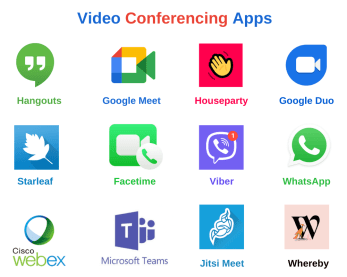From Lockdowns to Logins: The Rise of Video Conferencing in the COVID-19 Era
The COVID-19 pandemic fundamentally reshaped how we live, work, and interact. Social distancing measures and lockdowns forced a global shift towards virtual spaces. In this new normal, video conferencing emerged as a lifeline, enabling businesses to stay operational and individuals to maintain connections. This article explores the dramatic rise of video conferencing during the pandemic and the applications that benefitted the most.
A Pre-existing Technology, Thrust into the Spotlight
Video conferencing technology existed well before the pandemic. However, its adoption rate was primarily limited to specific industries and situations. Business meetings often relied on in-person interactions, while social connections were maintained through phone calls and social media. The pandemic disrupted these traditional modes of communication, creating an urgent need for a virtual alternative.
The Perfect Storm for Video Conferencing
The success of video conferencing during the pandemic stemmed from a confluence of factors. Lockdowns and social distancing measures made physical meetings impossible. Businesses, educational institutions, and even healthcare providers were forced to adapt. Video conferencing offered a solution, enabling:
- Remote Work: Businesses transitioned to remote work models, with video conferencing becoming essential for team meetings, client interactions, and project management.
- Education: Schools and universities shifted to online learning, with video conferencing platforms facilitating virtual classrooms, lectures, and student interactions.
- Healthcare: Telehealth appointments became a popular option, allowing patients to consult with doctors remotely, minimizing the risk of infection.
- Social Connection: With social gatherings restricted, video conferencing provided a way for families and friends to connect face-to-face, albeit virtually.
The Rise of the Conferencing Giants
The pandemic fueled a surge in the use of existing video conferencing applications and the emergence of new players. Here's a look at some of the major beneficiaries:
- Zoom: Arguably the biggest winner, Zoom experienced a meteoric rise. Its user-friendly interface, ease of use, and free basic plan propelled it to the forefront of the video conferencing scene. Daily meeting participants grew from 10 million in December 2019 to 300 million in April 2020, a staggering 30x increase.
- Microsoft Teams: Backed by the global reach of Microsoft Office, Teams became a natural choice for many businesses already invested in the Microsoft ecosystem. Its integration with other productivity tools like OneDrive and SharePoint further enhanced its appeal.
- Google Meet: As part of the Google Workspace suite, Google Meet offered a robust and secure video conferencing solution for businesses and educational institutions. Seamless integration with Gmail and Calendar made it a convenient option for existing Google users.

- Social Video Conferencing Apps: Houseparty, a social video chat app, saw a significant rise in popularity among younger users, particularly in Europe. Its focus on gamified features and a more casual atmosphere catered to a specific demographic.

Beyond the Pandemic: The Future of Video Conferencing
While the pandemic acted as a catalyst, video conferencing is here to stay. The convenience, cost-effectiveness, and flexibility it offers make it a valuable tool for businesses and individuals alike. Here's a glimpse into the potential future of video conferencing:
- Hybrid Work Models: The pandemic normalized remote work, and video conferencing will play a crucial role in facilitating hybrid work models, where employees split their time between home and office.
- Enhanced Features: We can expect advancements in features like virtual reality integration, AI-powered noise cancellation, and real-time language translation, further blurring the lines between physical and virtual interactions.
- Security and Privacy Concerns: As video conferencing becomes more commonplace, concerns around security and user privacy will need to be addressed. Companies will need to prioritize robust security features and ensure user data is protected.
Conclusion
The COVID-19 pandemic forced a paradigm shift towards virtual communication, and video conferencing emerged as a game-changer. It facilitated business continuity, education, healthcare delivery, and even social connection during a time of unprecedented isolation. As we move forward, video conferencing will continue to evolve, shaping the way we work, learn, and connect in a post-pandemic world.



































![Nekodex – Earn 20K+ NekoCoin ($20) [Highly Suggested]](https://cdn.bulbapp.io/frontend/images/b4f0a940-f27c-4168-8aaf-42f2974a82f0/1)

































